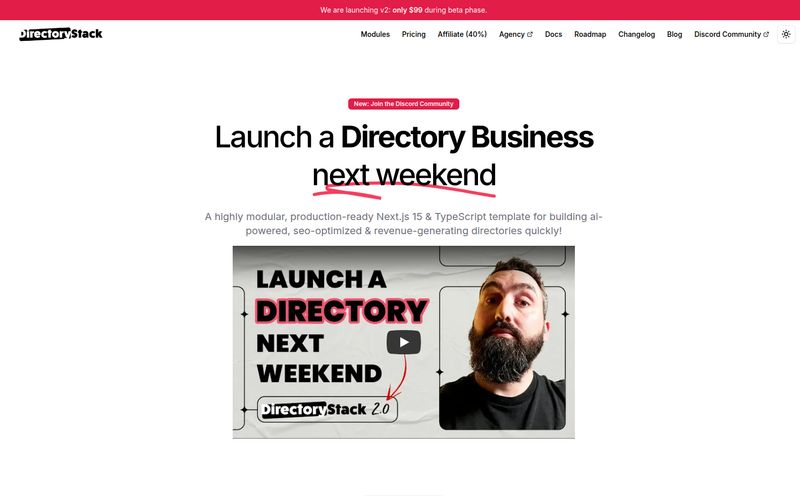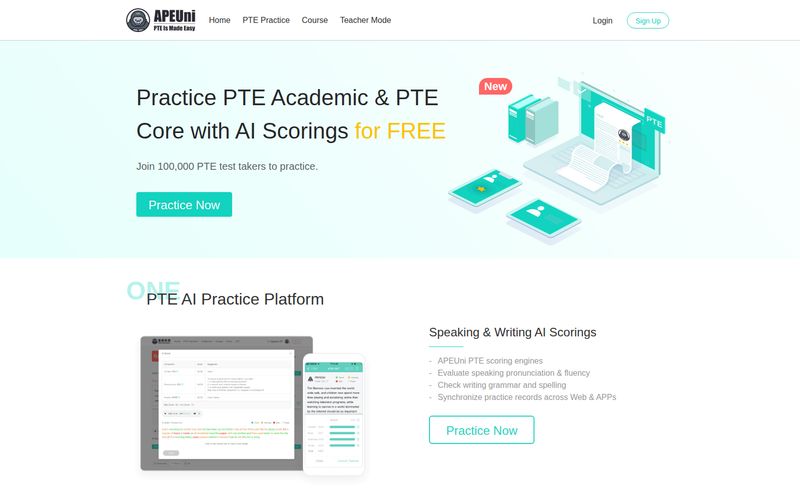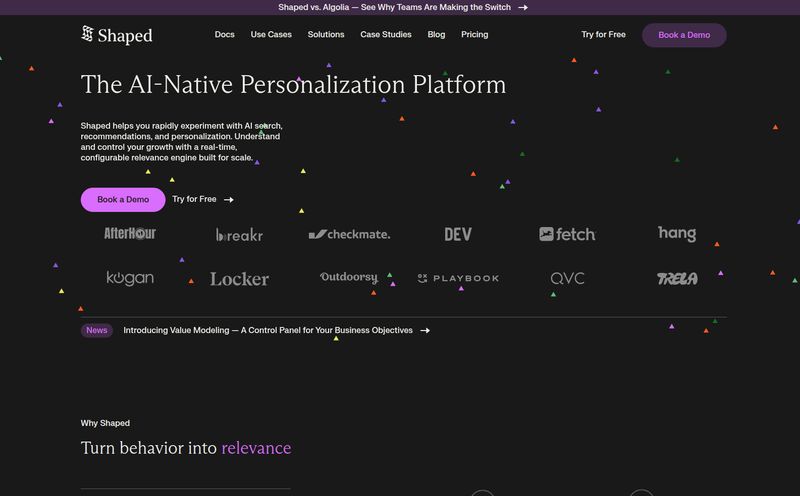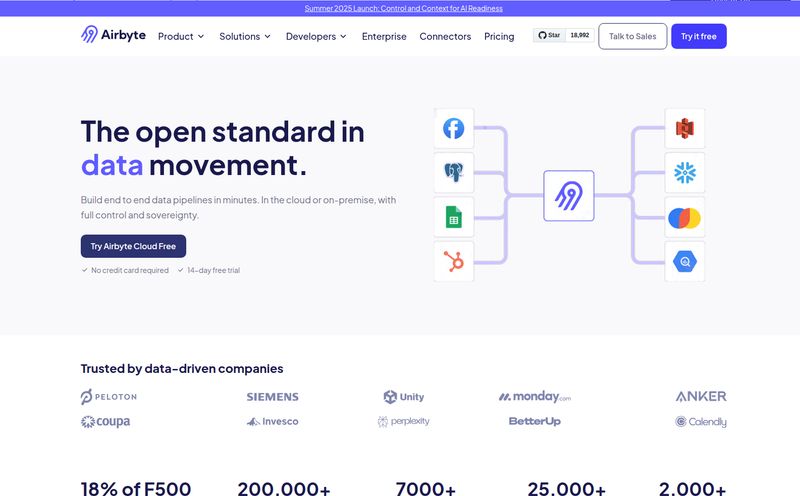I’ve been in the digital marketing and SEO game for what feels like a lifetime. I’ve seen trends come and go, watched platforms rise and fall, and tested more tools than I can count. Honestly, it takes a lot to make me sit up and say, “Whoa, okay, this is different.” We’re in the middle of an AI gold rush, and every other company is slapping an “AI-powered” label on their product. Most of it is just noise.
But every so often, you find a gem. A tool that doesn’t just follow the trend but feels like it’s setting a new standard. For me, that’s AssemblyAI. I’d been hearing the name whispered in developer circles and Slack channels, so I figured it was time to see what all the fuss was about. And let me tell you, the fuss is justified.
What Exactly is AssemblyAI, Anyway?
Let’s get this out of the way: AssemblyAI is not a simple little app where you upload an audio file and get a text document back. I mean, it can do that, but that’s like using a sledgehammer to crack a nut. AssemblyAI is an API-first platform built for developers, product managers, and businesses who understand that voice data is an untapped goldmine. It’s a set of building blocks for integrating sophisticated audio intelligence directly into your own products.
Think about all the voice data your business generates. Customer support calls, sales meetings on Zoom, internal training videos, user-generated content on your app. It’s a massive, messy, unstructured pile of information. AssemblyAI is the engine that transforms that chaos into clean, structured, and—most importantly—actionable data. It’s not just about transcription; it’s about understanding.
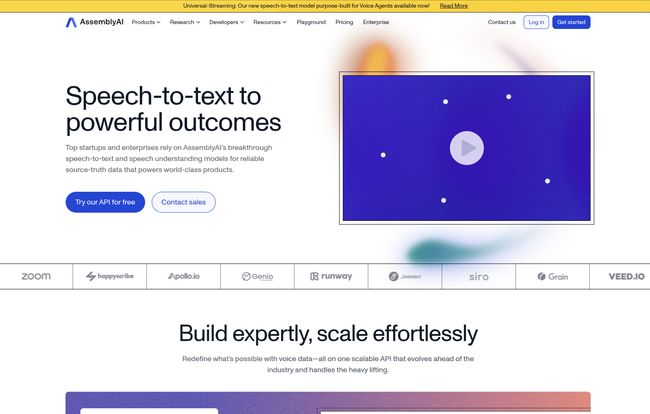
Visit AssemblyAI
The Features That Actually Matter
You can read a feature list anywhere. What I care about is how those features solve real-world problems. The team at AssemblyAI clearly gets this, because their offerings feel less like a checklist and more like a well-thought-out toolkit.
More Than Just Words: The Core Speech-to-Text
The foundation of everything is, of course, their speech-to-text (S2T) model. And it is ridiculously accurate. They claim up to a 15% higher accuracy rate over competitors, and from my own tests, I believe it. In the world of transcription, a few percentage points is the difference between a usable transcript and a frustrating mess of corrections. This applies to both pre-recorded audio files (like podcasts or meeting recordings) and real-time streaming audio (for things like live captioning or voice-controlled apps). The speed is impressive, turning around hours of audio in minutes. It's the kind of reliability you need when you're building a product on top of it.
The “Wow” Factor: Speech Understanding
This is where things get really exciting and where AssemblyAI pulls away from the pack. They don't just tell you what was said; they help you understand what it means. This is a suite of models that adds layers of context to the raw text.
"We're not playing around—but you can," says their website. It's a cheeky line, but it's true. They provide the serious, enterprise-grade tools so you can get creative and build amazing things.
Some of the standouts here include:
- Speaker Diarization: Ever tried to read a meeting transcript where you can't tell who's talking? It's useless. This feature, often called speaker labeling, automatically identifies and labels each speaker. For call center analytics or multi-person interviews, this isn’t a nice-to-have, its essential.
- Sentiment Analysis: The model analyzes the text to determine if the tone is positive, negative, or neutral. Imagine automatically flagging all your negative customer support calls for immediate review. That’s powerful.
- PII Redaction: This one is HUGE. The model automatically finds and removes personally identifiable information like names, credit card numbers, and social security numbers from the transcript. For anyone dealing with sensitive data and trying to stay compliant with GDPR or HIPAA, this feature alone is worth its weight in gold.
- Content Moderation: Automatically flag any problematic or sensitive topics being discussed in your audio content.
Let's Talk Money: The AssemblyAI Pricing Model
Alright, the part everyone always scrolls down to first. How much does all this magic cost? I find their pricing to be refreshingly transparent and scalable. It's not the cheapest solution on the market, but it’s not supposed to be. You're paying for top-tier accuracy and features.
Here’s a simplified breakdown:
| Plan | Cost | Best For |
|---|---|---|
| Free | Free (includes $50 in credits) | Developers and teams who want to experiment, build a proof-of-concept, or run smaller projects. |
| Pay as you go | Starts at $0.12/hour for S2T | Teams ready to integrate the API into a live product and scale their usage predictably. |
| Custom | Contact Sales | Large enterprises needing custom models, dedicated support, and high-volume processing. |
The free tier is incredibly generous. $50 in credits lets you do some serious testing before committing a dime. The Pay-as-you-go model is fair, charging for what you use. Yes, the cost can add up if you're processing thousands of hours of audio, but at that scale, the insights you're gaining should provide a far greater ROI.
My Honest Take: The Good and The Not-So-Good
No tool is perfect, so here's my unfiltered perspective after kicking the tires.
What I Love
The developer experience is top-notch. An API is only as good as its documentation, and AssemblyAI's docs are clean, clear, and packed with examples. They make it easy to get started. The accuracy, as I've mentioned, is phenomenal. And the sheer breadth of the 'Speech Understanding' features means you can build incredibly rich applications from a single API provider, rather than trying to stitch together three or four different services.
What You Should Know
This is a professional, API-first platform. If you're not a developer and don't have access to one, this isn't for you. This is not a consumer-facing app. It's the engine, not the car. Also, while the pricing is fair for the value, it's an investment. If you're a solo bootstrapped founder on a shoestring budget, you'll need to plan for the cost as you scale. It’s a tool for serious builders.
Who is AssemblyAI Actually For?
I see a few key groups getting massive value here:
- SaaS Companies: Anyone building a product in the video or audio space. Think meeting platforms, podcasting tools, or social media apps.
- Enterprises: Specifically those with large call centers. The ability to transcribe and analyze 100% of customer calls for sentiment, key topics, and agent performance is a game-changer.
- Media & Content Creators: For transcribing vast archives of audio/video content, making it searchable and repurposable.
It's probably not for the student who needs to transcribe a single lecture or the journalist transcribing one interview. There are simpler, one-off tools for that. This is for when audio intelligence is a core part of your product or business strategy.
Frequently Asked Questions about AssemblyAI
- How accurate is AssemblyAI?
- It's widely considered to have industry-leading accuracy. While no transcription is 100% perfect, AssemblyAI consistently performs at the top of the market, which is critical for professional applications.
- Can I use AssemblyAI for free?
- Yes! They offer a very generous free tier that includes $50 of credits, which is more than enough to build a proof-of-concept and thoroughly test the API's capabilities.
- Is it hard to integrate the AssemblyAI API?
- If you have development experience, it’s quite straightforward. They provide excellent documentation, SDKs for popular languages like Python and Javascript, and clear code examples.
- What is the difference between Speech-to-Text and Speech Understanding?
- Speech-to-Text converts audio to words. Speech Understanding analyzes those words for deeper meaning and context, such as sentiment, speaker identity, key topics, and sensitive information.
- Does AssemblyAI support different languages?
- Yes, it supports dozens of languages and can even automatically detect the language being spoken in an audio file, which is a fantastic feature for handling international content.
- What is PII Redaction and why is it important?
- PII Redaction automatically removes Personally Identifiable Information (like names, addresses, credit card numbers) from transcripts. This is vital for data privacy and complying with regulations like GDPR and CCPA.
The Final Word
In a sea of AI hype, AssemblyAI feels like the real deal. It’s a robust, powerful, and thoughtfully designed platform for anyone serious about unlocking the value hidden in their voice data. It's not a magic button, but it is a world-class engine. If you're building a product or a system that needs to understand human speech at scale, you owe it to yourself to check them out. The future of user interaction and data analysis is increasingly verbal, and AssemblyAI is one of the best toolkits I've seen for building that future.
